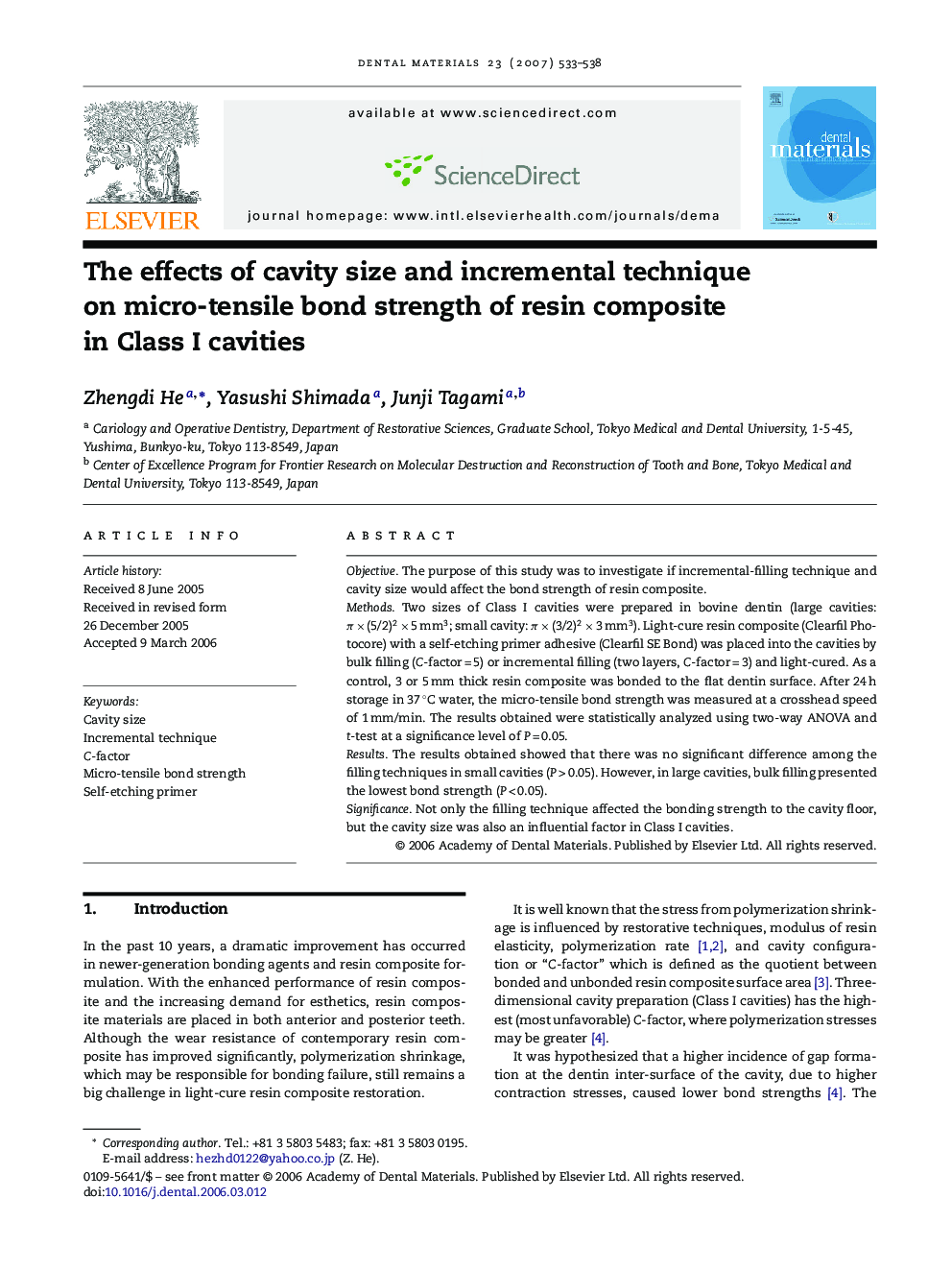| Article ID | Journal | Published Year | Pages | File Type |
|---|---|---|---|---|
| 1423345 | Dental Materials | 2007 | 6 Pages |
ObjectiveThe purpose of this study was to investigate if incremental-filling technique and cavity size would affect the bond strength of resin composite.MethodsTwo sizes of Class I cavities were prepared in bovine dentin (large cavities: π × (5/2)2 × 5 mm3; small cavity: π × (3/2)2 × 3 mm3). Light-cure resin composite (Clearfil Photocore) with a self-etching primer adhesive (Clearfil SE Bond) was placed into the cavities by bulk filling (C-factor = 5) or incremental filling (two layers, C-factor = 3) and light-cured. As a control, 3 or 5 mm thick resin composite was bonded to the flat dentin surface. After 24 h storage in 37 °C water, the micro-tensile bond strength was measured at a crosshead speed of 1 mm/min. The results obtained were statistically analyzed using two-way ANOVA and t-test at a significance level of P = 0.05.ResultsThe results obtained showed that there was no significant difference among the filling techniques in small cavities (P > 0.05). However, in large cavities, bulk filling presented the lowest bond strength (P < 0.05).SignificanceNot only the filling technique affected the bonding strength to the cavity floor, but the cavity size was also an influential factor in Class I cavities.
